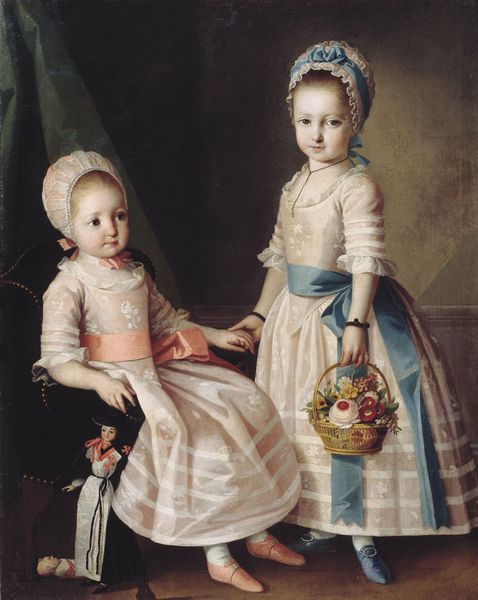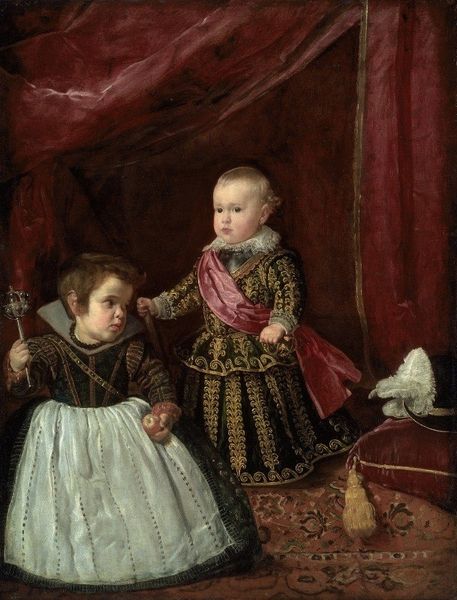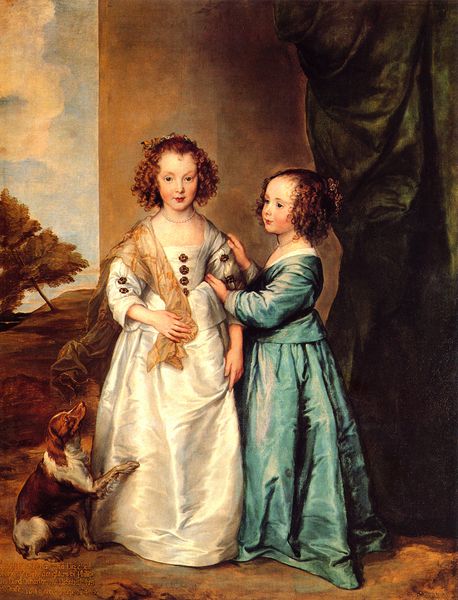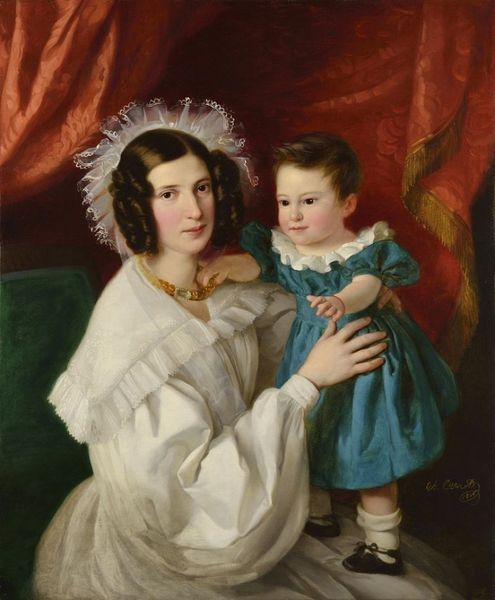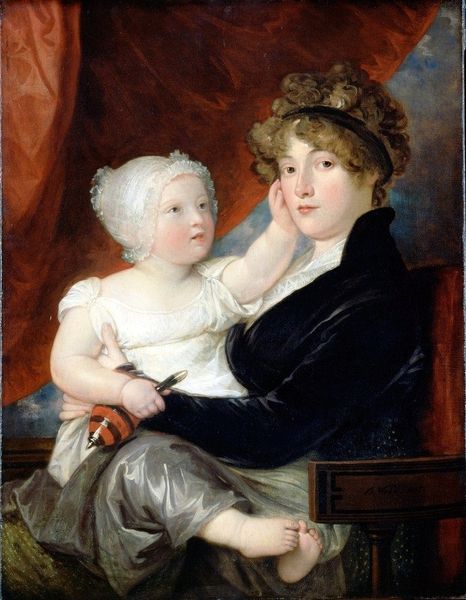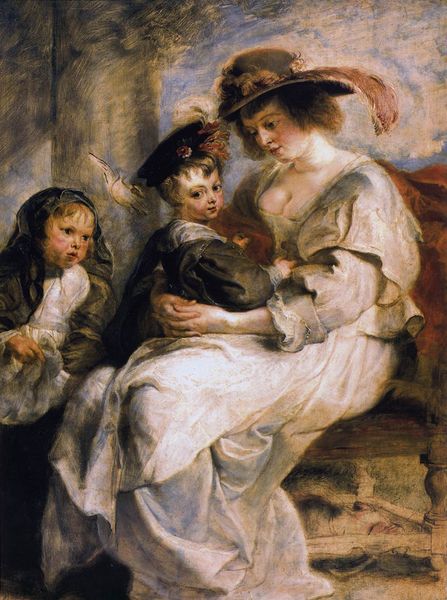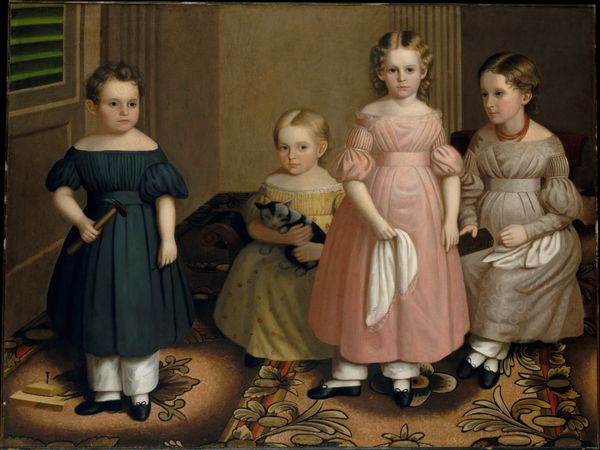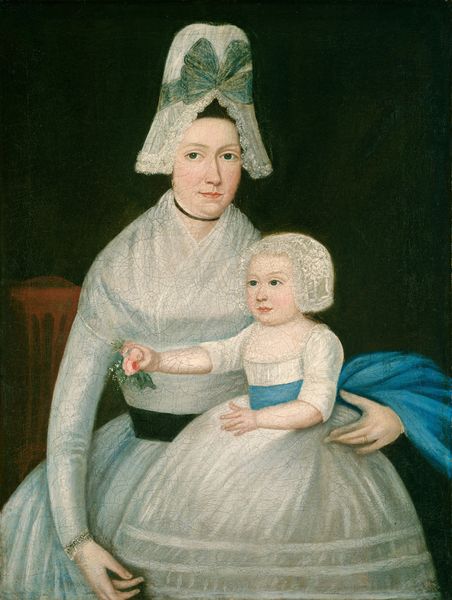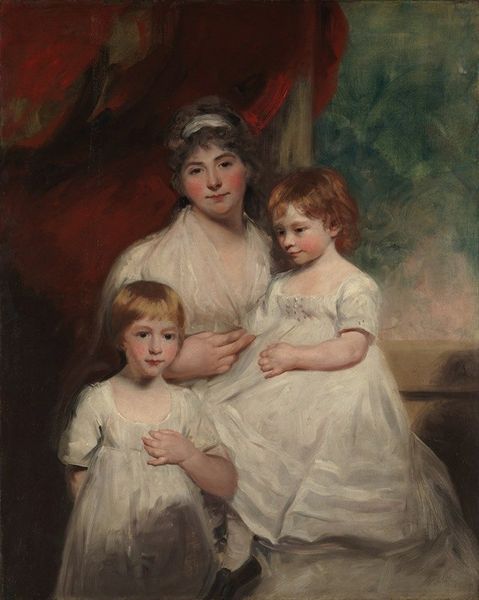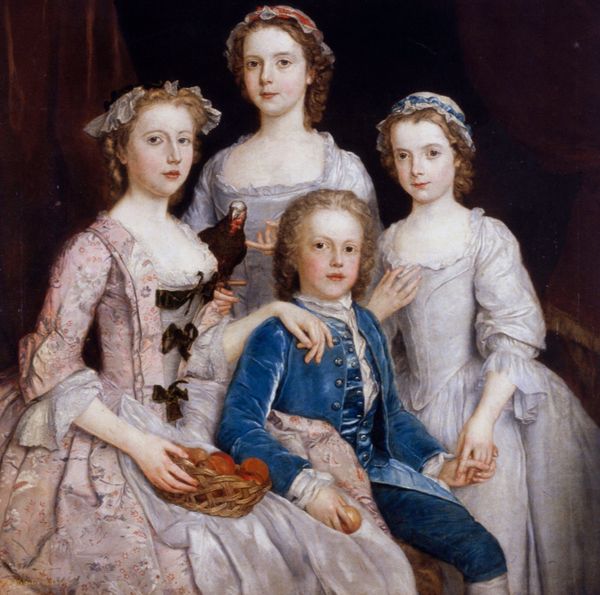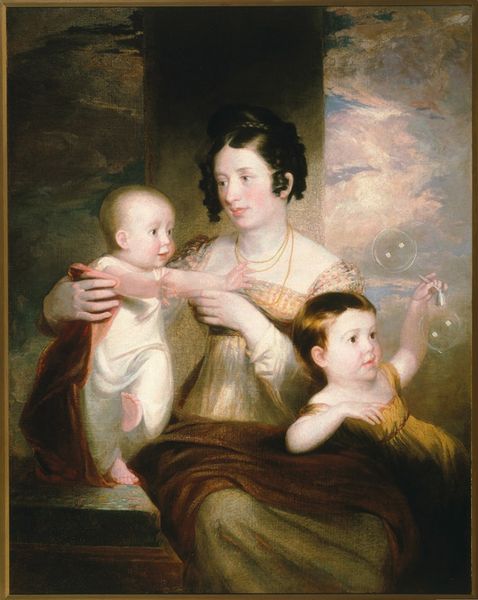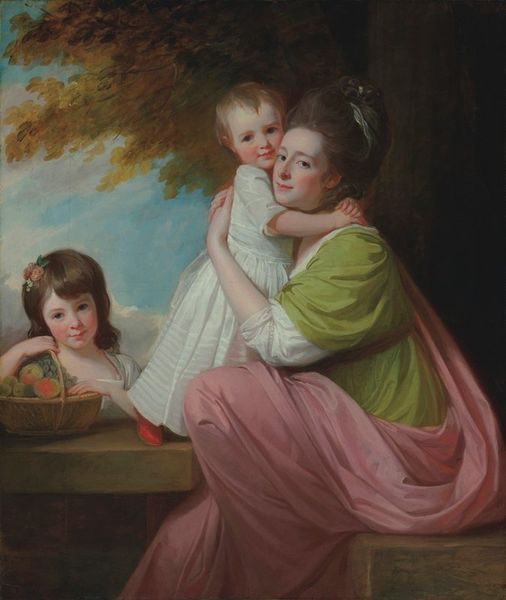
Dimensions: 105.5 x 89.5 cm
Copyright: Public domain
Curator: Hogarth’s “Portrait of Lady Mary Grey and Lord George Grey," painted around 1740, immediately strikes me as oddly staged, almost performative. Editor: My first impression is one of opulent childhood. Look at the materiality of those fabrics, the lace on their clothes, it screams privilege and expensive production processes. Curator: Indeed. Consider that this seemingly innocuous scene features siblings from a complicated lineage, descended from Edward Grey, who forfeited his titles. Their identity and inherited position would have been loaded with contemporary implications. This portrayal must be understood in light of shifting political powers of the time. Editor: Absolutely. The materials tell a parallel story. Pigments, canvases, expensive textiles, were all luxury goods reliant on the exploitation of resources and labor. We can't separate this image of innocent childhood from those production networks that afforded such finery. Look at the delicate embroidery – likely the work of skilled but often underpaid laborers. Curator: It is also remarkable how Hogarth frames gender. Mary has a work spool, her brother a dog and dark colors of authority. What about that little dog, George seems to be clinging to it for life, an early introduction to patriarchal society through such signifiers. It reflects traditional gendered expectations and societal roles, doesn’t it? Editor: Of course, the animal itself as a status symbol, acquired at some cost, and kept docile. And you cannot overlook that the canvas, stretched and prepared just so, has its own economic significance that is interwoven with their place in the world, making clear a celebration of a particular kind of elevated social position. Curator: So, we see not merely a charming portrait, but an intricate narrative woven from lineage, societal expectations and even the raw materials that compose the work, all coalescing into an insight into the era’s intricate power dynamics. Editor: Precisely. From the fibers of their clothes to the application of the paints, every element is testament to economic realities that shaped their existence and that continue to speak loudly to us.
Comments
No comments
Be the first to comment and join the conversation on the ultimate creative platform.
